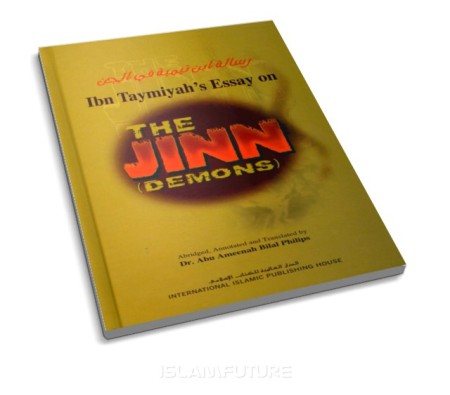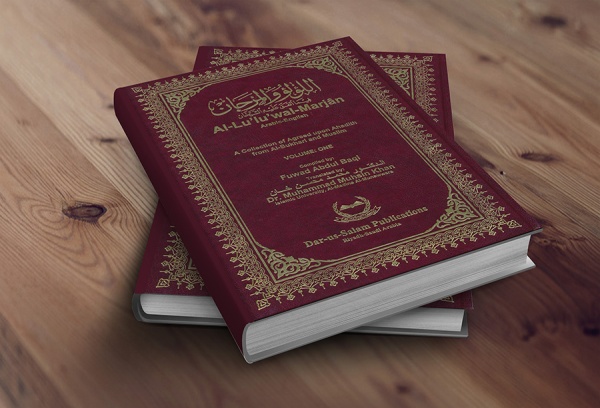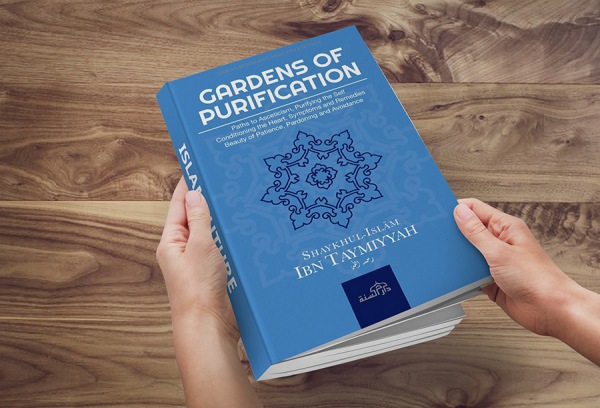
Imam Ibn Taymiyah
Language: English | Format: PDF | Pages: 136 | Size: 4 MB
Dr. Abu Ameenah Bilal Philips has rendered Ibn Taymiyah’s treatise, “Eedâh ad-Dalâlah fee ‘Umoom ar-Risâlah”, from volume 19 of Majmoo‘ al-Fatâwâ (A Collection of Religious Rulings) into very readable English. This abridged and annotated translation is significant in that it is perhaps the first book available in English exclusively on the topic of spirit-possession and exorcism in Islam. Shaykh Ibn Taymiyah’s treatise provides a very clear, concise, and authentic view of this intriguing subject based on the Qur’an, the Sunnah, the interpretation and experience of the Companions of the Prophet (blessings and peace of Allah be upon him) and the early scholars of Islam. The translator has also added an appendix consisting of an article written on the subject of spirit-possession and exorcism by one of the leading contemporary scholars of Saudi Arabia confirming Ibn Taymiyah’s views as both relevant and orthodox.
Ahmad ibn ‘Abdul-Haleem ibn Taymeeyah was born in the town of Harran [near Edessa, in what was once Northern Iraq, but is now called Orfa and is a part of Turkey], in the year 1263 CE. His father was a leading scholar of the Hanbalite school of Islamic law and so was his grandfather, who authored Muntaqaa al-Akhbaar, the text of ash-Shawkaanee’s Hadeeth classic Nayl al-Awtaar.
Ibn Taymeeyah mastered the various disciplines of Islamic study at an early age and read extensively the books of the various sects and religions in existence at that time. Much of his time and effort was spend defending the orthodox Islamic position against a tidal wave of deviation which had swept over the Muslim nation. Consequently, he faced many difficulties from both the prominent sectarian scholars of his time and from the authorities who supported them. His clashes with them led to his imprisonment on numerous occasions. Ibn Taymeeyah also fought, not only against internal enemies of Islaam, but also against its external enemies by both his Fatwaas (Islamic legal rulings) and his physical participation in battles. His ruling allowing the taking up arms against groups which recognized the Shahaadataan (declaration of faith) but refused to uphold some aspects of the fundamental principles of Islaam, greatly affected the resistance movement against the Tartars who had declared their acceptance of Islaam but did not rule according to divine law. During these struggles he wrote countless books and treatises demonstrating his extensive reading and knowledge, not only of the positions of the early scholars, but also those of the legal and theological schools which had subsequently evolved.
Ibn Taymeeyah also had a major effect on the open-minded scholars of his day, most of whom were from the Shaafi’ite school of law. Among the most famous of his students were IBN KATHEER, ADH-DHAHABEE and IBN AL-QAYYIM. The author died in 1328 while in prison in Damascus for his Fatwaa against undertaking journeys to visit the graves of saints [Ibn Taymeeyah’s ruling was based on the authentic statement reported by Abu Hurayrah wherein the Prophet Muhammad (saws) said, “Do not undertake a journey except to three masjids; this masjid of mine, Masjid al-Haraam (Makkah) and Masjid al-Aqsaa (Bayt al-Maqdis).” Collected by Al-Bukhaaree and Muslim]. His Fatwaa had been distorted by his enemies to say that he forbade visiting the Prophet Muhammad’s (saws) grave.
CHAPTER THREE: DEMONIC VISIONS
Those involved in incantations and oaths often swear by some devils to help them against others. Sometimes the evil Jinn fulfil their request but frequently they do not, especially when the Jinn against whom help is sought is honored among them. Neither the one chanting incantations nor his incantations have any power to force the devils to help them. The reciter of incantations earnestly entreats a being whom he considered great – which may or may not be the case – to harm others who may conceivably be greater. In the case where someone entreats the Jinn to harm someone whom the Jinn hold in high esteem, they will ignore him. In fact, it may prevent them from even responding at all. Their situations is quite similar to that of humans except that human beings are generally more intelligent, truthful, just and trustworthy while the Jinn tend to be ignorant, untruthful, oppressive and treacherous.
The point is that though the oaths and incantations of devil-worshippers may contain statements of idolatry and disbelief, they are frequently ineffective against the Jinn. When requested to kill or apprehend another Jinn who has possessed a human, the Jinn will often mock those who make the request by falsely giving them the impression that they killed or detained the offending Jinn. This is especially so in cases where humans believe in the illusions created by the Jinn. The Jinn usually communicate by either visions or voices [“The gleaning of hidden information by way of visions and voices has been well documented among clairvoyants and mediums. ‘A medium’ may be defined as a person through whose agency or through whose orgainsm there are received communications ostensibly from deceased human beings or other discarnate or remote entities. In what is called ‘clairvoyant mediumship’ -now popularly known as channelling- the meduim ‘sees’ or ‘hears’ the deceased friends and relatives of persons persent and relays messages from them. Generally speaking, the experiences concerned seem not to have the distinctness of ordinary perception but are rather a seeing or hearing ‘in the mind’s eye’ or ear. Sometimes, however, the figures seen or voices heard may attain as hallucinatory vividness; the medium’s experience then resembles that of one who witnesses an apparition.” (Benjamin B. Wolman. ed., Handbook of Parapsychology, New York, Van Nostrand Reinhold Company, 1977, pp, 579-580)] with those seeking information among the idol-worshippers, Christians, Jews, and heretical Muslims driven astray by the devils.
JinnS may take the form of a live picture portraying whatever the sorcerers and fortunetellers wish to know about. When these deviants see the image of what they sought, they then inform other humans about it. Some of them may know that the image is actually an illusion, while others may be deluded into believing that they are actually wintessing the real scene. JinnS may also make humans hear the voice of those whom they call upon who are far away. Such cases are frequent among idolaters, Christians, Jews and ignorant Muslims who seek refuge in those whom they consider holy. When some devotees call on their spiritual masters for help saying, “Oh my Lord so and so!” the Jinn will address them in the voice of their masters. When the masters answer their request, the Jinn, in turn, answer the devotees in the masters’ voice. This has happened to many people some of whom are known to me. The devils will often respond while talking the form of the one besought, whether dead or alive, even if he is unaware of those who call on him. Those committing Shirk in this fashion believe that the person beseeched has actually replied when in fact it is the Jinn replying. This frequently happens to Christians who call on those whom they edify, whether dead or alive, like George or other holy figures [ROME, Feb 24 1989 (AFP) – A retired Italian roadman Renato Baron claims that he has been seeing and talking to the Virgin Mary for nearly three years now. Visions by Baron and about THIRTY others have attracted tens of thousands of people from Italy, France, Belgium, and West Germany to a hill near Venice, causing huge traffic jams. Ambridge, Pennsylvania – A small Roman Catholic Church in a western Pennsylvania mill town is preparing for a deluge of pilgrims after a reported Good Friday miracle in which the eyes of a statue of Christ suddenly closed. The Rev. Vincent Cvitkovic, a Franciscan friar, and many of his parishoners reported that the eyes of a life-size statue which depicts the crucified Christ, which have been open for 60 years, closed during a prayer meeting. (The Times, Monday, April 10th 1989, no. 63, 364, p.8) In 1981 a group of five children were playing on a hill just outside of a village in the Yugoslavian Republic of Bosnia – Herzegovina called Medugorje when a vision of a beautiful woman claiming to be the Blessed Virgin Mary appeared before them. Since 1981 some seven to eight million pilgrims from different countries, cultures and Christian traditions have climbed up the holy hill of Medugorje. At 7:30 every evening pilgrims and tourists anxiously crowd around the dark rectory of a nearby church staring at the stream of light which will signify that once more the children, who still gather there daily, are having their private audience with the Blessed Mother. (IRF, Newsletter of the International Religious Foundation, Inc., Vol II, No. 6, Nov-Dec 1987, pp 1-2). Divine grace (salvation) is felt to be especially potent in places visited by Jesus Christ or Saints or by Mary; where they have appeared in visions. Major pilgrimage centers include Lourdes where visions of the Virgin Mary were first seen in 1858 and where healing has been occuring since that time. (John R. Hinnells, ed., Dictionary of Religions, Middlesex, England: Penguin Books Ltd., 1984, p. 284)]. Continue reading →









